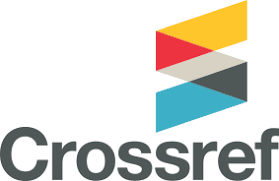Comparative Analysis of Denoising Techniques for Optimizing EEG Signal Processing
Electroencephalogram (EEG); Independent Component Analysis (ICA); Principal Component Analysis (PCA); Percentage Residual Difference (PRD).
Abstract
Electroencephalogram (EEG) is a non-invasive technology that is widely used to record the electrical activity of the brain. However, often the EEG signal is contaminated by noise, including ocular artefacts and muscle activity, which can interfere with accurate analysis and interpretation. This research aims to improve the quality of EEG signals related to concentration by comparing the effectiveness of two denoising methods, namely Independent Component Analysis (ICA) and Principal Component Analysis (PCA). Using commercial EEG headsets, this study recorded Alpha, Beta, Delta, and Theta signals from 20 participants while they performed tasks that required concentration. Evaluation of the effectiveness of the denoising technique is carried out by focusing on changes in standard deviation and calculating the Percentage Residual Difference (PRD) value of the EEG signal before and after denoising. The results show that ICA provides better denoising performance than PCA, as reflected by a significant reduction in standard deviation and a lower PRD value. These results indicate that the ICA method can effectively reduce noise and preserve important information from the original signal.
Downloads
References
[2] B. Bencsik, I. Reményi, M. Szemenyei and J. Botzheim, "Designing an Embedded Feature Selection Algorithm for a Drowsiness Detector Model Based on Electroencephalogram Data" Sensors, vol. 23, no. 4, Feb. 2023, doi: 10.3390/s23041874.
[3] V. P. Kumaravel, M. Buiatti, E. Parise and E. Farella, "Adaptable and Robust EEG Bad Channel Detection Using Local Outlier Factor (LOF)" Sensors, vol. 22, no. 19, Sep. 2022, doi: 10.3390/s22197314.
[4] A. J. Kamrud, B. J. Borghetti and C. M. S. Kabban, "The Effects of Individual Differences, Non-Stationarity, and the Importance of Data Partitioning Decisions for Training and Testing of EEG Cross-Participant Models" Sensors, vol. 21, no. 9, May. 2021, doi: 10.3390/s21093225.
[5] I. P. A. E. D. Udayana, M. Sudarma, I. K. G. D. Putra and I. M. Sukarsa, "EEG Study of Dasa Aksara Yoga and Improved Focus on Distance Learning Student" in 2021 International Conference on Smart-Green Technology in Electrical and Information Systems (ICSGTEIS), 28-30 Oct. 2021, doi: 10.1109/ICSGTEIS53426.2021.9650393
[6] M. Rashida and M. A. Habib, "Quantitative EEG features and machine learning classifiers for eye-blink artifact detection: A comparative study" Neuroscience Informatics, vol. 3, no. 1, Mar. 2023, doi: 10.1016/j.neuri.2022.100115.
[7] S. Sharma, M. Nunes and A. Alkhachroum, "Adult Critical Care Electroencephalography Monitoring for Seizures: A Narrative Review" Frontiers in Neurology, 15:13:951286, Jul. 2022. doi: 10.3389/fneur.2022.951286.
[8] C. Xiao, B. Yao, B. Chen, W. Sun and G. Tan, "Automatic Seizure Classification Based on Domain-Invariant Deep Representation of EEG" Frontiers in Neuroscience, 15;15:760987, Oct. 2021, Oct. 2021, doi: 10.3389/fnins.2021.760987.
[9] M. Mustafa, Z. L. Zahari and R. Abdubrani, "Optimal Accuracy Performance In Music-Based Eeg Signal Using Matthew Correlation Coefficient Advanced (MCCA)" Jurnal Teknologi, vol. 83, no. 6, pp. 53-61, Sep. 2021, doi: 10.11113/jurnalteknologi.v83.16750.
[10] H. Zhao and G. Bin, "EEG Signal Denoising Based on Deep Residual Shrinkage Network" in 5th International Conference on Power Electronics and Control Engineering (ICPECE), Dec. 2022. doi: 10.1088/1742-6596/2395/1/012076.
[11] W. Yan and Y. Wu, "A time-frequency denoising method for single-channel event-related EEG" Frontiers in Neuroscience, vol. 16, Nov. 2022, doi: 10.3389/fnins.2022.991136.
[12] Z. A. A. Alyasseri, A. T. Khader, M. A. Al-Betar, A. K. Abasi and S. N. Makhadmeh, "EEG Signals Denoising Using Optimal Wavelet Transform Hybridized With Efficient Metaheuristic Methods" IEEE Access, vol. 8, pp. 10584-10605, Jan. 2020, doi: 10.1109/ACCESS.2019.2962658.
[13] A. Bhatnagar, K. Gupta, U. Pandharkar, R. Manthalkar and N. Jadhav, "Comparative Analysis of ICA, PCA-Based EASI and Wavelet-Based Unsupervised Denoising for EEG Signals" Advances in Intelligent Systems and Computing, 2019, doi: 10.1007/978-981-13-1513-8_76.
[14] A. Bhatnagar, K. Gupta, U. Pandharkar, R. Manthalkar and N. Jadhav, "Comparative Analysis of ICA, PCA-Based EASI and Wavelet-Based Unsupervised Denoising for EEG Signals" Advances in intelligent systems and computing, pp. 749-759, Sep. 2018.
[15] R. Paraschiv, C. K. Bănică, I. R. Adochiei, L. E. Dorobantu, D. M. Cotorobai, and I. Manea, “Comparative Study of Stress Using the Classical Method and EEG Wave Processing” in 2022 10th E-Health and Bioengineering Conference, EHB 2022, Institute of Electrical and Electronics Engineers Inc., 2022. doi: 10.1109/EHB55594.2022.9991607.
[16] C. K. Bănică et al., “Computational Method of Describing Persons Psychology After Processing EEG Waves” in 2022 10th E-Health and Bioengineering Conference, EHB 2022, Institute of Electrical and Electronics Engineers Inc., 2022. doi: 10.1109/EHB55594.2022.9991718.
[17] Syed Waqas Gillani and Bo Ning, “Classification of Pulmonary Nodule using New Transfer Method Approach” (IJACSA) International Journal of Advanced Computer Science and Applications, vol. 11, no. 9, pp. 9–13, 2020. doi: 10.14569/IJACSA.2020.0110902.
[18] J. J. Bird, L. J. Manso, E. P. Ribeiro, A. Ekárt, and D. R. Faria, “A Study on Mental State Classification using EEG-based Brain-Machine Interface” in 2018 International Conference on Intelligent Systems (IS), 2018, pp. 795–800. doi: 10.1109/IS.2018.8710576.
[19] M. Lindefeldt et al., "The ketogenic diet influences taxonomic and functional composition of the gut microbiota in children with severe epilepsy" npj Biofilms and Microbiomes, vol. 5, no. 1, Jan. 2019.
[20] I. P. A. E. D. Udayana, M. Sudarma, I. K. G. D. Putra and I. M. Sukarsa, "Effect on signal magnitude thresholding on detecting student engagement through EEG in various screen size environment" Bulletin of Electrical Engineering and Informatics, vol. 12, no. 4, pp. 2292-2301. Aug. 2023.
[21] D. S. Prasad, S. R. Chanamallu and K. S. Prasad, "Optimized deformable convolution network for detection and mitigation of ocular artifacts from EEG signal" Multimedia Tools and Applications, vol. 81, no. 21, pp. 30841-30879, Apr. 2022.
[22] P. Tripathi. "Electroencephalogram signal quality enhancement by total variation denoising using non-convex regulariser" International Journal of Biomedical Engineering and Technology, vol. 33, no. 2, pp. 134-134, Jan, 2020.
[23] I. Hussain and S. J. Park, "Quantitative Evaluation of Task-Induced Neurological Outcome after Stroke" Brain Sciences, vol. 11, no. 7, Jul. 2021. doi: 10.3390/brainsci11070900.
[24] L. Liu, C. Shi and X. Wu, "Low Quality Samples Detection in Motor Imagery EEG Data by Combining Independent Component Analysis and Confident Learning" in 2022 21st International Symposium on Communications and Information Technologies (ISCIT), Sep. 2022.
[25] [21] Y. Kerechanin and P. Bobrov, "EEG denoising using wavelet packet decomposition and independent component analysis" in 2022 Fourth International Conference Neurotechnologies and Neurointerfaces (CNN), Sep. 2022.
[26] L. Feng, Z. Li and J. Zhang, "Fast automated on‐chip artefact removal of EEG for seizure detection based on ICA‐R algorithm and wavelet denoising" IET circuits, devices & systems, vol. 14. no. 4. pp. 547-554. May. 2020.
[27] M. J. Antony et al., "Classification of EEG Using Adaptive SVM Classifier with CSP and Online Recursive Independent Component Analysis" Sensors. vol. 22. no. 19. pp. 7596-7596. Oct. 2022.
[28] Y. Ruan, X. Chen, X. Zhang and X. Chen, "Principal component analysis of photoplethysmography signals for improved gesture recognition" Frontiers in Neuroscience. vol. 16. Nov. 2022. doi: 10.3389/fnins.2022.1047070.
[29] F. D. Yagmur and A. Sertbaş, "Automatic Diagnosis of Epilepsy from EEG Signals using Discrete Cosine Transform" in 2020 28th Signal Processing and Communications Applications Conference (SIU), Oct. 2020, doi: 10.1109/SIU49456.2020.9302300.
[30] C. Okreghe, M. Zamani and A. Demosthenous, "A Deep Neural Network-Based Spike Sorting With Improved Channel Selection and Artefact Removal" IEEE Access, vol. 11, pp. 15131 – 15143, Jan. 2023. doi: 10.1109/access.2023.3242643.
[31] Z. A. A. Alyasseri et al., "Multi-objective flower pollination algorithm: a new technique for EEG signal denoising" Neural Computing and Applications, vol. 35. no. 11. pp. 7943-7962. Jan. 2022, doi: 10.1007/s00521-021-06757-2.
[32] T. A. Suhail, K. Indiradevi, E. M. Suhara, S. A. Poovathinal and A. Anitha, "Performance Analysis of Mother Wavelet Functions and Thresholding Methods for Denoising EEG Signals during Cognitive Tasks" in 2020 International Conference on Power, Instrumentation, Control and Computing (PICC), Dec. 2020, doi: 10.1109/PICC51425.2020.9362377

This work is licensed under a Creative Commons Attribution 4.0 International License.
The Authors submitting a manuscript do so on the understanding that if accepted for publication, the copyright of the article shall be assigned to Jurnal Lontar Komputer as the publisher of the journal. Copyright encompasses exclusive rights to reproduce and deliver the article in all forms and media, as well as translations. The reproduction of any part of this journal (printed or online) will be allowed only with written permission from Jurnal Lontar Komputer. The Editorial Board of Jurnal Lontar Komputer makes every effort to ensure that no wrong or misleading data, opinions, or statements be published in the journal.
 This work is licensed under a Creative Commons Attribution 4.0 International License.
This work is licensed under a Creative Commons Attribution 4.0 International License.























